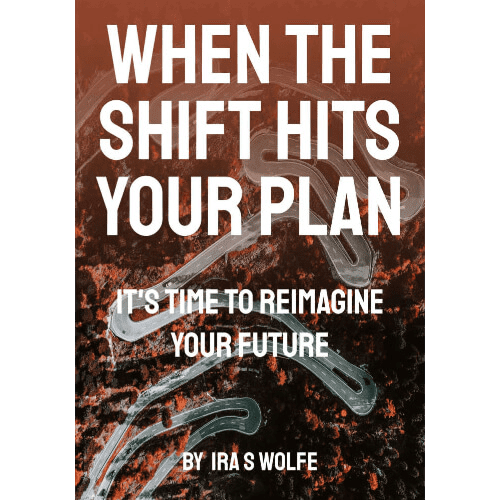Combatting Zoom Fatique
An Interview with Volley CEO Josh Little
SEGMENT #1 – FEATURED GUEST
People are exhausted by endless video Zoom meetings since the beginning of this New Normal, thanks to COVID-19. Josh Little is here to help you beat Zoom fatigue. Josh says, “it doesn’t have to be this way!”
Little identifies the main cause of Zoom meeting fatigue to be an almost imperceptible delay in video conferencing that grinds against our conversational instincts. Some people think the solution is to just get on Zoom less, but Little knows that conversation drives work forward.
Instead of trying to cram our normal conversation habits into a virtual space, why don’t we adapt the conversation to the digital world? That’s the big idea behind Volley, a video messaging app that is a home for conversations that are too robust for a chat message, but don’t quite need to be a meeting. This new way of talking keeps the benefits of a video call without the interruption and exhaustion.
SEGMENT #2 – AHEAD OF THE CURVE
Joyce Gioia joins the show for the second installment of “Ahead of the Curve: Normal 2.0.” This week she is taking on the topic of leadership in the new normal.In
LISTEN, WATCH, SUBSCRIBE
Quotes
[10:38] “It is not natural, we are missing that really important bit of synchronicity.”
[11:51] “The reality is we need to talk to move work forward. Conversation is the heart of what moves work forward.”
[18:55] “The answer is not talking less because conversation or communication is the way that we move work forward.”
[20:25] “I’ve fallen in love with asynchronous video communication.”
[28:30] “We’ve all been in meetings where some people can’t stop talking and some people can’t get a word in edgewise. The beauty of asynchronous is that everyone can hit the record button.”
[36:43] “AQ, or adaptability quotient, is even more important than it has ever been before.”
[38:29] “We are in a time where our employees need us to be more for them than we ever had to be before.”
Podcast Notes
Zoom Fatigue [9:52]
[10:38] “It is not natural, we are missing that really important bit of synchronicity.”
Having meetings back to back to back used to be a badge of courage in the pre-pandemic world, but now that we have replaced real face-to-face meetings with virtual ones, people are feeling burnt out and fatigued from even a regular schedule of meetings. Even though Zoom is just the scapegoat here–plenty of other platforms contribute to digital fatigue–it is the leader in video conferencing, meaning it is the cause of most people’s exhaustion.
Zoom fatigue happens because it misses out on a tiny bit of synchronicity that makes meetings feel awkward. Specifically, it’s the little delay between one person talking and the other person hearing that adds stress. It’s constantly thinking, “Can I talk now? Is the other person finished? Did I just interrupt them?” It takes a lot of emotional energy to process those feelings, which causes many people to feel fatigued.
Could we have avoided Zoom meeting fatigue? [11:49]
[11:51] “The reality is we need to talk to move work forward. Conversation is the heart of what moves work forward.”
Given that the pandemic has kept us from meeting in person, what would the response have looked like if it weren’t for Zoom and platforms like it? The short answer is that it would have been disastrous because work depends on conversation. Even though chat, text, and email are all good supplements, they can’t replace real-time conversation. We needed Zoom and platforms like it to act as a proxy for conversation, even if they have some negative effects like fatigue.
One thing we know about language is that a pause of even a few milliseconds can cause a conversation to feel awkward. We are so skilled at conversation that turns only take about 200 milliseconds. When there is a delay in a digital conversation of even a second, it causes stress all around. So, with tools like Zoom, this fatigue seems to be a necessary evil. But what if there was a better way?
Beating Zoom fatigue [18:35]
[20:25] “I’ve fallen in love with asynchronous video communication.”
Common advice for beating Zoom fatigue comes down to one solution: use Zoom less, which means talk less. But talking, communicating, is how work moves forward. That’s why executives spend 28 hours per week in meetings. The time spent talking face-to-face is essential for making decisions, generating new ideas, and doing all of the things that make work better.
The solution is not to talk less, it’s to talk differently. We have rapid turn-based conversation styles because we are used to being in settings that make that the best way to communicate. However, with technology, we can actually break up the turns of conversations and engage with them whenever we have the time.
This is where Josh Little’s conversation hub called Volley comes in. This application lets users record a Volley, which is a short video message, and share it easily with coworkers, who can then Volley back. It is designed to stand in the space between Slack and Zoom, for communication that needs more than a short written note and less than a video conference.
Of course there is still space for synchronous video communication, especially for very important or emotional conversations. However, an app like Volley lets users maintain turn-based conversations at convenient times instead of demanding people try to fit normal conversation skills into a virtual platform.
Asynchronous video messaging for better productivity [26:42]
[28:30] “We’ve all been in meetings where some people can’t stop talking and some people can’t get a word in edgewise. The beauty of asynchronous is that everyone can hit the record button.”
We used to only have two options if we needed to talk through a problem: have a meeting or jump on a call. We have added a third option, which is a video call, but even that can be very disruptive to a workday. However, as we have been forced to work remotely, more products have entered the market that allow for asynchronous communication, such as apps that facilitate simple creation and sharing of screen recordings.
Volley combines the benefits of video conferencing with the convenience of a chat message. It allows users to “explode” a conversation so they can take their turns in it at their convenience. Not only does this cut down on time needed for video conferences, it reduces Zoom fatigue by eliminating the stressful conversation pauses caused by delays on video conferencing.
Ahead of the Curve: Normal 2.0 [34:58]
[38:29] “We are in a time where our employees need us to be more for them than we ever had to be before.”
It may feel like everything is new now, but Joyce Gioia has some good news: the same old leadership skills still matter, it’s just that now, some are more important that others. Things are changing so fast now that leaders need to be more adaptable than ever before.
Leaders also need to be more empathetic than they ever were before. Not only are employees experiencing huge amounts of change, they are doing this with the backdrop of a crisis. Some are losing loved ones, some are having to totally rearrange their lives, and some are sick themselves. Normal 2.0 requires that leaders intentionally work to see from employees’ perspectives.
Employees, leaders, and organizations need to have a purpose behind their work now more than ever. The best way to do this could be to align every layer of an organization to a single purpose or mantra. From the CEO to employees to clients, every part of the organization needs to be aligned to a meaningful purpose.







